 1999 Hyundai Centennial Dimensions, Size & Specs
1999 Hyundai Centennial Dimensions, Size & SpecsMeasurements of the 1999 Hyundai Centennial, engineered for optimal performance and comfort
| Dimensions | |
|---|---|
| Length: | 5065 mm199.4 in16.6 ft |
| Width: | 1870 mm73.6 in6.1 ft |
| Height: | 1465 mm57.7 in4.8 ft |
| Trunk Capacity: | 505 liter17.8 cu ft |
| Weight Specifications | |
| Curb Weight: | 1940-2075 kg4277-4575 lbs |
| Maximal permitted Weight: | 2265 kg4993 lbs |
| Tire Specifications | |
| Tire Sizes: |
|
The Hyundai Centennial, produced from 1999 to 2008, is a full-size sedan designed to offer a luxurious and spacious driving experience. With a notable length of 5065 mm (199.4 inches), a width of 1870 mm (73.6 inches), and a height of 1465 mm (57.7 inches), this sedan stands out for its generous proportions typical of luxury sedans from its era. The Centennial’s curb weight ranges from 1940 to 2075 kg (approximately 4277 to 4574 lbs), with a maximum weight capacity of 2265 kg (4993 lbs), indicating its robust build quality and ability to comfortably carry passengers and cargo. It offers a practical luggage space of 505 liters (around 17.8 cubic feet), ensuring ample storage for daily use or longer trips.
The tire options for the Centennial include 225/60 R16, 235/55 R17, and 225/60 R16V, contributing to a balanced ride quality and stability. Throughout its production years, the Centennial set itself apart as a premium sedan in Hyundai’s lineup, competing with other luxury sedans by emphasizing interior comfort, refined styling, and solid road presence. These size specifications also help highlight the car’s suitability for drivers seeking a spacious yet manageable sedan for both city driving and extended drives. Whether comparing it with other vehicles from the late 1990s or early 2000s, the Hyundai Centennial remains a notable example in the segment for its size and weight class.
Discover the standout features that make the 1999 Hyundai Centennial a leader in its class
Have a question? Please check our knowledgebase first.
The Hyundai Centennial sedan, produced between 1999 and 2008, features substantial dimensions befitting its full-size luxury class. Its length measures 5065 mm (199.4 inches), which gives it a commanding presence on the road. The width stands at 1870 mm (73.6 inches), allowing for comfortable seating space inside while maintaining stability. The vehicle height is 1465 mm (57.7 inches), contributing to a balanced profile that is neither too tall nor too low. These dimensions reflect the car's design focus on spaciousness and elegance, making the Hyundai Centennial an impressive and roomy sedan for its era.
The Hyundai Centennial has a curb weight ranging from 1940 kg to 2075 kg (approximately 4277 to 4574 lbs) and a maximum weight capacity of 2265 kg (4991 lbs). This weight range situates it firmly within the heavyweight luxury sedan segment, contributing to a smooth and stable ride due to its solid build. The higher curb weight can enhance driving comfort by absorbing road irregularities but may slightly reduce fuel efficiency and acceleration compared to lighter vehicles. Handling might feel more planted and steady, especially at higher speeds and on the highway, although the car may be less agile in tight corners when compared to lighter or more compact sedans.
The Hyundai Centennial offers a luggage capacity of 505 liters (approximately 17.8 cubic feet), which is quite generous for a luxury sedan of its size. This ample boot space allows owners to carry large suitcases, groceries, or other items with ease, making it suitable for both long trips and everyday use. The practicality of this storage volume supports the vehicle's role as a premium family car or executive sedan, where ample cargo space complements the comfort and luxury provided to passengers. Additionally, the trunk layout tends to be well designed for accessibility and efficient use of space.
The Hyundai Centennial sedan can be equipped with several tire size options: 225/60 R16, 235/55 R17, and 225/60 R16V. These tires balance comfort and performance, with the 16-inch options providing a smoother ride due to higher sidewalls that absorb bumps effectively. The 17-inch tires typically offer slightly improved handling characteristics with a marginally lower profile, enhancing road grip and cornering stability. The specific tire choice can influence ride quality and driving dynamics; however, all options are designed to maintain the vehicle's overall luxury ride standard, ensuring passenger comfort is prioritized.
With a length of 5065 mm (199.4 inches) and a width of 1870 mm (73.6 inches), the Hyundai Centennial is a large luxury sedan that approaches the limits of many standard garage sizes. A typical single-car garage has an interior width of about 2.7 meters (approximately 106 inches) and a depth of around 5.5 to 6 meters (217 to 236 inches). While the Hyundai Centennial should technically fit into such spaces, it may leave little extra room on either side for comfortable door opening or storage. Owners with compact garages may find maneuvering the Centennial more challenging, so measuring your garage before acquisition is recommended to ensure a good fit.
The Hyundai Centennial, introduced in 1999, succeeded earlier Hyundai luxury offerings that were generally smaller and lighter. Compared to its immediate predecessors, the Centennial features increased length, width, and curb weight, aligning it with full-size luxury sedans rather than mid-size vehicles. This growth in size and weight reflects Hyundai's strategy to enhance passenger comfort, luxury feel, and overall road presence. The larger dimensions contribute to improved interior space, especially for rear passengers, while the increase in weight correlates with added structural reinforcements and features typical of a premium sedan. Overall, the Centennial steps up in its class to compete more aggressively with established luxury models.
When compared to other full-size luxury sedans from the late 1990s and early 2000s, such as the Lexus LS 400, Mercedes-Benz S-Class, and BMW 7 Series, the Hyundai Centennial holds its own in dimensions. Its length of 5065 mm (199.4 inches) is comparable or slightly larger than many competitors, providing generous interior space, especially for rear-seat passengers. The width at 1870 mm (73.6 inches) fits comfortably into the size bracket of this segment, though some rivals might be marginally wider. Curb weight ranging from 1940 kg to 2075 kg (4277 to 4574 lbs) is also within the expected range for luxury sedans of this class, indicating a solid build quality. Overall, the Centennial competes well dimensionally, offering a spacious and substantial alternative to more established luxury brands.
While exact interior dimensions are not specified here, the Hyundai Centennial's exterior size—over five meters in length and nearly 1.9 meters in width—translates to a notably roomy interior. As a full-size sedan, the vehicle is designed to comfortably accommodate five passengers, with particular emphasis on rear-seat comfort and legroom. The large overall dimensions enable a spacious cabin with ample headroom and shoulder room suitable for business executives, families, or chauffeur-driven contexts. The generous cabin size also supports additional luxury features such as reclining rear seats, enhanced sound insulation, and superior climate control options, reinforcing the vehicle’s premium status.
The ground clearance for the Hyundai Centennial is typical of full-size luxury sedans, usually ranging between 130 to 160 mm (around 5.1 to 6.3 inches), although exact figures can vary depending on suspension settings and tire options. This clearance is adequate for everyday urban and highway driving but is not intended for off-road use or very rough terrain. It provides a good balance between ease of entry and exit, aerodynamic efficiency, and protection from common road obstacles such as speed bumps or potholes. Drivers should exercise caution on uneven or unpaved roads to avoid undercarriage damage.
The Hyundai Centennial was offered with various V6 and V8 engine options throughout its production from 1999 to 2008, designed to deliver smooth and potent performance suited to a luxury flagship sedan. Although fuel efficiency was not its primary focus, the engines provided a balance of power and reasonable consumption for their time. Typical fuel economy figures for full-size luxury sedans like the Centennial ranged approximately from 10 to 15 liters per 100 kilometers (23 to 16 miles per gallon) depending on engine choice, driving conditions, and model year refinements. Hyundai emphasized reliability and comfort over aggressive fuel savings, aligning with market expectations for this vehicle class during that era.
Discover similar sized cars.
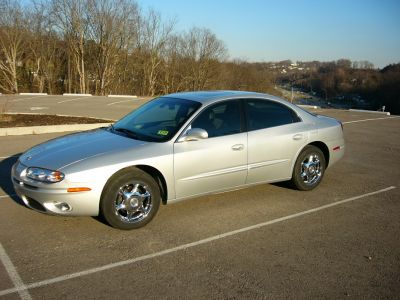
| Production: | 1999-2003 |
|---|---|
| Model Year: | 2001 |
| Length: | 5062 mm199.3 in |
| Width: | 1852 mm72.9 in |
| Height: | 1440 mm56.7 in |

| Production: | 2013-2015 |
|---|---|
| Model Year: | 2012 |
| Length: | 5092 mm200.5 in |
| Width: | 1902 mm74.9 in |
| Height: | 1485-1491 mm58.5-58.7 in |

| Production: | 2018-present |
|---|---|
| Model Year: | 2019 |
| Length: | 5121 mm201.6 in |
| Width: | 1915 mm75.4 in |
| Height: | 1491 mm58.7 in |

| Production: | 2015-2018 |
|---|---|
| Model Year: | 2015 |
| Length: | 5095 mm200.6 in |
| Width: | 1900 mm74.8 in |
| Height: | 1490 mm58.7 in |
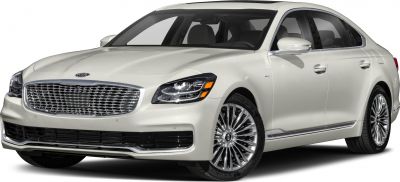
| Production: | 2018-2021 |
|---|---|
| Model Year: | 2019 |
| Length: | 5120 mm201.6 in |
| Width: | 1915 mm75.4 in |
| Height: | 1490 mm58.7 in |
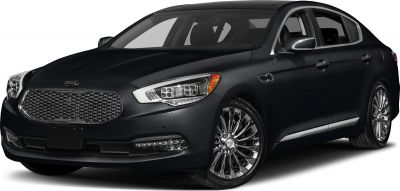
| Production: | 2014-2018 |
|---|---|
| Model Year: | 2014 |
| Length: | 5095 mm200.6 in |
| Width: | 1900 mm74.8 in |
| Height: | 1486 mm58.5 in |
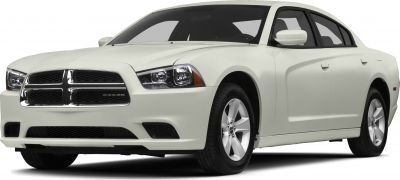
| Production: | 2011-2014 |
|---|---|
| Model Year: | 2011 |
| Length: | 5077-5088 mm199.9-200.3 in |
| Width: | 2098 mm82.6 in |
| Height: | 1482 mm58.3 in |
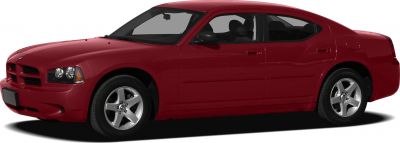
| Production: | 2006-2010 |
|---|---|
| Model Year: | 2006 |
| Length: | 5082 mm200.1 in |
| Width: | 1891 mm74.4 in |
| Height: | 1479 mm58.2 in |
